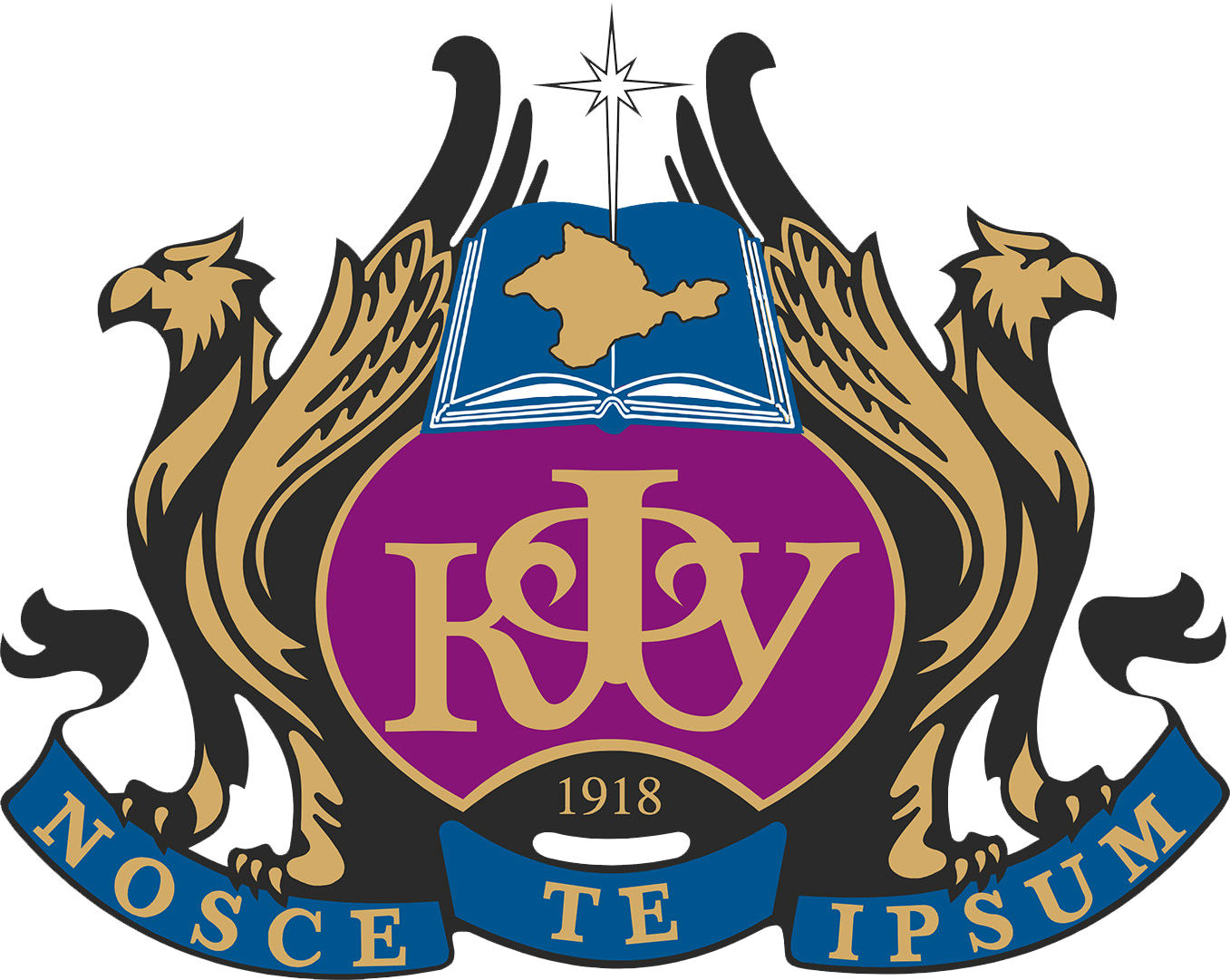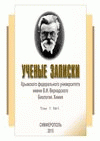Методами УФ-спектроскопии, вискозиметрии и рН-метрии были изучены наноструктуры селена, образующиеся в результате восстановления селенит-ионов аминокислотой L-цистеином в водном растворе биологически активного полимера поливинилпирролидона с различной молекулярной массой. Исследовано влияние массового соотношения селен–полимер и молекулярной массы полимера на структурно-конформационные характеристики наноструктур. В результате адсорбции полимера на поверхности наночастиц селена образуется селеносодержащие нанокомпозиты, агрегативно устойчивые в течение месяца.
наночастицы, наноселен, цистеин, полимерные стабилизаторы, поливинилпирролидон, селеносодержащие наноструктуры
1. Tretiak L. N. Specificity of selenium influence on human and animal's organism (with regard to the problem of creation of seleniumcontaining food stuff). Bulletin of the Orenburg State University, 12, 136
2. Golubkina N. A., Skalny A. V., Sokolov Ya. A. Selenium in medicine and ecology, 136 p. ("KMK", Moscow, 2006). (in Russ.)
3. Gromova O. A. Selenium – impressive results and prospects of use. Difficult patient, 14 (5), 25 (2007). (in Russ.).
4. Skrypnic L., Chupakhina G. He influence of selenium and zinc on oxidative stability of celery cabbage. Bulletin of the I. Kant Russian State University. Ser. Natural sciences. 7, 73 (2007). (in Russ.).
5. Golubkina N. A., Poluboyarinov P. A., Sindiryova V. A. Selenium in foods of plant origin. Problems in Nutrition. 86 (2), 63 (2017). (in Russ.). EDN: https://elibrary.ru/YKKEZB
6. Golubkina N. A., Sindireva A. V., Zaitsev V. F. Nterigional variability of the human selenium status. South of Russia: ecology, development, 12 (1), 107 (2017). (in Russ.). EDN: https://elibrary.ru/YIELCF
7. Kokhan S. T., Fefelova E. V., Maksimenya M. V., Tereshkov P. P., Krivosheeva E. M., Pateyuk A. V., Shantanova L. N. Recovery and antioxidant selenium-containing immune defense funds in experimental
8. Golubev W. I., Golubev N. W. Comparison of sodium selenite and selenate toxicity for saccharomyces complex. Problems in medical mycology, 9 (3), 34 (2007). (in Russ.). EDN: https://elibrary.ru/PENKMZ
9. Bhattacharjee A., Basu A., Bhattacharya S. Selenium nanoparticles are less toxic than inorganic and organic selenium to mice in vivo, Nucleus, 62, 259 (2019). https://doi.org/10.1007/s13237-019-00303-1. EDN: https://elibrary.ru/LCKATS
10. Shurygina I. A., Shurygin M. G. Selenium nanocomposites – the prospects of application in oncology. Journal of new medical technologies, 27 (1), 81 (2020). https://doi.org/10.24411/1609-2163-2020-16517 EDN: https://elibrary.ru/QOVPLB
11. Skorinova K. D., Kuzmenko V. V., Vasilenko I. A. Research and development of new drug products, 9 (2), 33 (2020). https://doi.org/10.33380/2305-2066-2020-9-2-33-44. (in Russ.).
12. Khurana A., Tekula S., Saifi M. A., Venkatesh P., Godugu C. Therapeutic applications of selenium nanoparticles, Biomed Pharmacother, 111, 802 (2019). https://doi.org/10.1016/j.biopha.2018.12.146. EDN: https://elibrary.ru/AJFQNV
13. Shurygina I. A., Dremina N. N., Trukhan I. S., Shurygin M. G. Selenium in nanoform: toxicity and safety. Baikal Medical Journal, 1 (1), 24 (2022). https://doi.org/10.57256/2949-0715-2022-1-24-32. (in Russ.).
14. Nayak V., Singh K., Singh A., Singh R. Potentialities of Selenium Nanoparticles in Biomedical Sciences. New J. Chem., 45, 2849 (2021). http://doi.org/10.1039/D0NJ05884J. EDN: https://elibrary.ru/VCRZVD
15. Zhang J., Taylor E. W., Bennett K., Saad R., Rayman M. P. Association between regional selenium status and reported outcome of COVID-19 cases in China. Am J Clin Nutr., 111(6), 1297 (2020)
16. Tananaev I. G., Folmanis G. E., Fedotov M. A., Kovalenko L. V. Production of colloidal solutions of selenium by dispersion methods. Bulletin of the Far Eastern Branch of the Russian Academy of Sciences, 5 (201),
17. Makarov S. V., Molodtsov P. A., Dereven'kov I. A., Naidenko E. V. Interaction of sodium selenite with sodium hydroxymethanesulfinate and thiourea dioxide in aqueous solutions. News of universities.
18. Li Q., Chen T., Yang F., Liu J., Zheng W. Facile and controllable one-step fabrication of selenium nanoparticles assisted by l-cysteine. Materials Letters, 64 (5), 614 (2010). DOI: https://doi.org/10.1016/j.matlet.2009.12.019; EDN: https://elibrary.ru/NWWCYL
19. Molodtsov P. A., Makarov S. V., Dereve’nkov I. A., Makarova A. S. Influence of proteins on the interaction between sodium selenite and sulfur-containing reductants. Izv. Vyssh. Uchebn. Zaved.,
20. Titova A. V., Borovikova L. N., Kipper A. I., Pisarev O. A. Stabilization of selenium nanoparticles by biologically active synthetic and natural polymers. In the collection: Science Week of SPbPU. Materials of the
21. Valueva S. V., Borovikova L. N., Kutin A. A., Plyushchenko A. V. Effect of the nature of nanoparticles and biocompatible polymer stabilizers on the sizes and spectral characteristics of hybrid nanosystems.
22. Panov D. A. Selenium and sodium alginate nanocomposites producing and properties, Scientific Notes of V.I. Vernadsky Crimean Federal University. Biology. Chemistry, 3 (1), 91 (2017). (in Russ.).
23. Panov D. A., Katsev A. M., Omelchenko A. V. Synthesis and properties of selenium nanoparticles in a natural polysaccharide matrix, Russian Journal of Bioorganic Chemistry, 49, 7, 1567 (2023). DOI: https://doi.org/10.1134/S1068162023070853; EDN: https://elibrary.ru/TSEURM
24. Lesnichaya M. V., Sukhov B. G. Synthesis of selenium sulfide nanoparticles in polysaccharide matrices of arabinogalactan and starch. Russian Nanotechnologies, 16 (2), 222 (2021). (in Russ.). DOI: https://doi.org/10.1134/S1992722321020096; EDN: https://elibrary.ru/GSOEEF
25. Bai K., Hong B., He J., Huang W. Antioxidant Capacity and Hepatoprotective Role of Chitosan-Stabilized Selenium Nanoparticles in Concanavalin A-Induced Liver Injury in Mice. Nutrients., 12(3),
26. Suzdalev I. P. Nanotechnology: physico-chemistry of nanoclusters, nanostructures and nanomaterials, 592 p. (URSS, 2019). (in Russ.).
27. Kirsh Yu. E. Poly-N-vinylpyrrolidone and other poly-N-vinylamides, 252 p. (Nauka, Moscow, 1998). (in Russ.).
28. Ostaeva G. Y., Isaeva I. Y., Grushina V. V., Stuzhuk A. N., Odinokova I. V. Influence of the molecular mass of poly(n-vinylpyrrolidone) on formation of Cu2O nanoparticles during reduction of divalent copper





